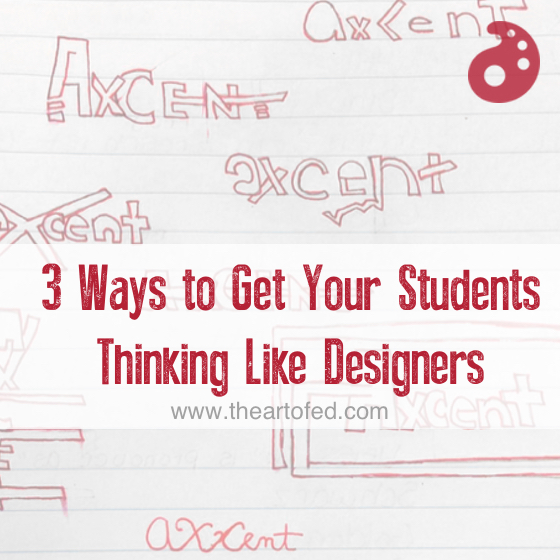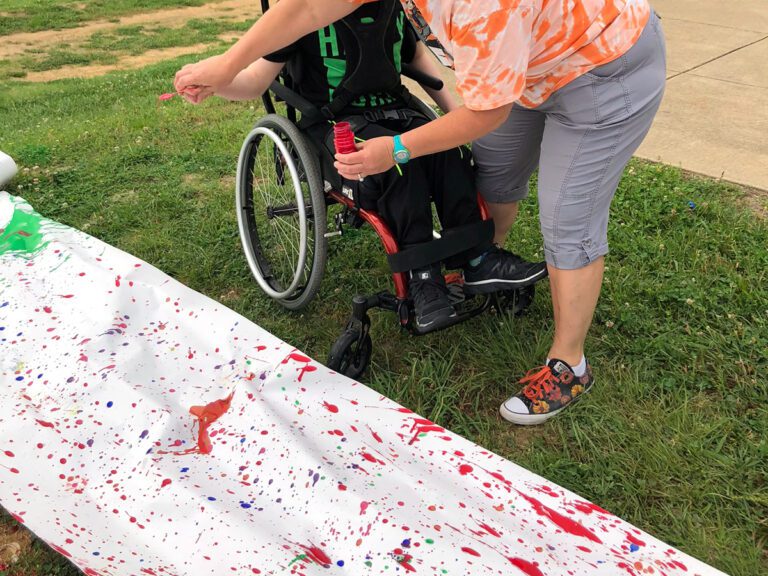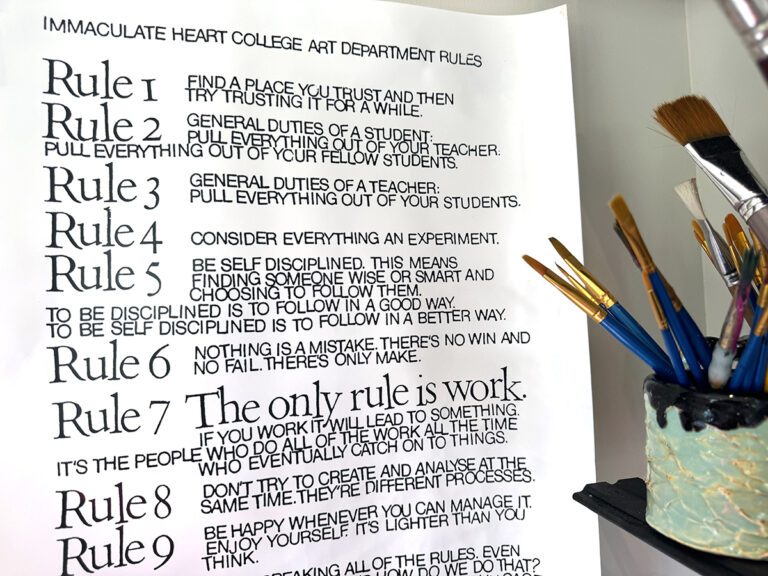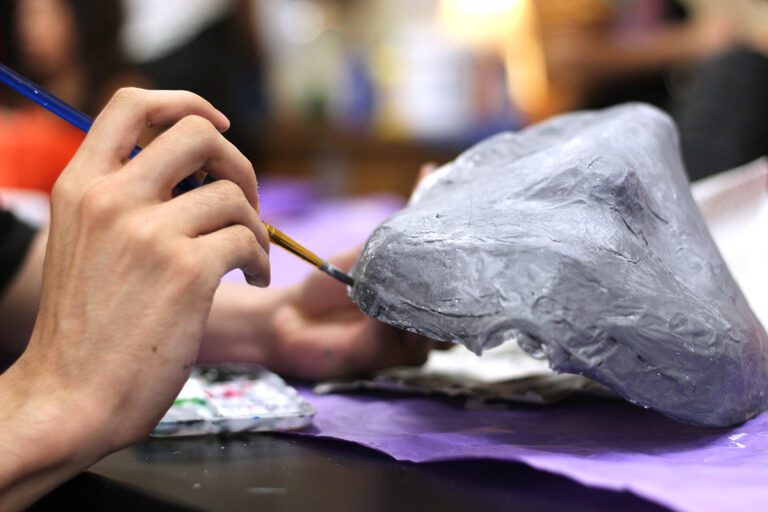I had an epiphany regarding teaching about five years ago: There are concepts and ways of thinking that the arts teach that are a hundred times more important than the elements and principles of design.
Developing students’ capacity for creativity is far more important to me than teaching two-point perspectives or value scales. This realization sent me down a whole new path of art education.

One of the things I kept coming back to was that only a tiny percentage of our students will actually become visual artists. If we’re being honest with ourselves, our model should not be to create future artists. Instead, we should think about how to develop creative and critical thinking skills in all of our students to help them in whatever professions they end up choosing.
Using design thinking to get at creative thinking skills is a great way to go. Students want to make things of use and value. Plus, students respect people that make the products they use such as websites, clothing, shoes, video games, movies, and more. Students have a much stronger connection to their world as mediated by designers than artists. This year, for the first time, I had a very frank conversation with my students about how I hoped they started thinking and acting like designers. I hit the message especially hard in my Technology and Advanced Technology in Art classes.
3 Ways to Get Your Students
Thinking and Creating Like Designers
1. Make it relevant.

Instead of using your own interests to create assignments, look to your community to see if there are any companies or organizations that would be willing to let your students try their hand at some real work. I’ve found a number of opportunities from designing 50th Anniversary Announcement cards to creating bookmarks to promote a local Makerspace for an upcoming Family STEM Fest. These design projects aren’t just abstract exercises. Instead, we have real clients with real communicated needs and feedback. The clients choose the winning designs and they are actually printed off and distributed throughout the community.
2. Make it collaborative.
I hate talking to my students about the “real world” as I find it delegitimizes their worlds. Instead, I bring up and model how collaboration is vitally important and widely used in the workplace. Students need to learn how to work with diverse groups of individuals with a diverse set of skills and temperaments. While very few students naturally relish “group work,” I’ve found that if I make the work meaningful and immense, students gladly find fortitude in being able to bounce ideas off of their classmates and being able to delegate the work.
3. Make it memorable.

Using unusual materials and objectives keeps learning fresh. In my classroom, we’ve made everything from zombie heads and steampunk blasters to masks that a Hollywood special effects firm might create. I’ve even had my students create cosplay armor out of cardboard and junk boats out of styrofoam. These projects aren’t your run-of-the-mill projects and their quirkiness I know left an indelible mark on my students’ learning.
Tie in student interests when applicable and let them make parodies and products. Encourage your students to follow their own inherent desires to chase the three E’s of education: the Explorer, the Engineer, and the Entrepreneur.
Have you transitioned at all toward design education?
What strategies have you used to build students’ creativity capacity?
Magazine articles and podcasts are opinions of professional education contributors and do not necessarily represent the position of the Art of Education University (AOEU) or its academic offerings. Contributors use terms in the way they are most often talked about in the scope of their educational experiences.




